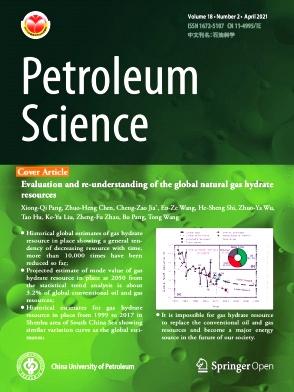Thermal characteristics and removal mechanism of high energy plasma jet rock-breaking
IF 6
1区 工程技术
Q2 ENERGY & FUELS
引用次数: 0
Abstract
High-energy plasma jet rock-breaking technology is regarded as a very promising new drilling approach for deep hard rock, attributed to its high energy density, high rock-breaking efficiency, absence of mechanical wear, and capability to drill high-hardness rocks. However, the thermal characteristics and rock-breaking mechanism of plasma jet remains unclear. This study thoroughly investigates the internal temperature distribution characteristics of granite and the thermal removal mechanism of plasma jet with combined experimental and numerical approaches. The spallation temperature of granite is calculated based on the Weibull statistical theory of tensile failure. A numerical model of the thermal melting process of granite is developed to obtain the erosion morphology and temperature distribution characteristics during the rock-breaking process. The results indicate that the spallation temperature induced by the plasma jet is approximately 557 °C, and the experimentally obtained hole profile on the upper surface coincides with the isotherm corresponding to the spallation temperature from the simulation. The temperature gradients of granite in the radial and axial directions of plasma arc operation can reach up to 38.79 and 66.13 °C/mm, respectively. And the heat-affected region expands with increasing current. The optimal removal efficiency can be achieved between 20 and 30 s under various plasma current conditions, with the maximum value of 1188 mm3/s at a current of 300 A. The plasma jet rock-breaking process can be characterized into three stages: dominant spalling in the early rock-breaking stage, followed by the coexistence of hot melting and spalling in the middle stage, and dominant high-temperature melting removal in the later stage. The results of this study provide theoretical guidance for engineering application of high-energy plasma jet rock-breaking drilling.
求助全文
约1分钟内获得全文
求助全文
来源期刊

Petroleum Science
地学-地球化学与地球物理
CiteScore
7.70
自引率
16.10%
发文量
311
审稿时长
63 days
期刊介绍:
Petroleum Science is the only English journal in China on petroleum science and technology that is intended for professionals engaged in petroleum science research and technical applications all over the world, as well as the managerial personnel of oil companies. It covers petroleum geology, petroleum geophysics, petroleum engineering, petrochemistry & chemical engineering, petroleum mechanics, and economic management. It aims to introduce the latest results in oil industry research in China, promote cooperation in petroleum science research between China and the rest of the world, and build a bridge for scientific communication between China and the world.
 求助内容:
求助内容: 应助结果提醒方式:
应助结果提醒方式:


